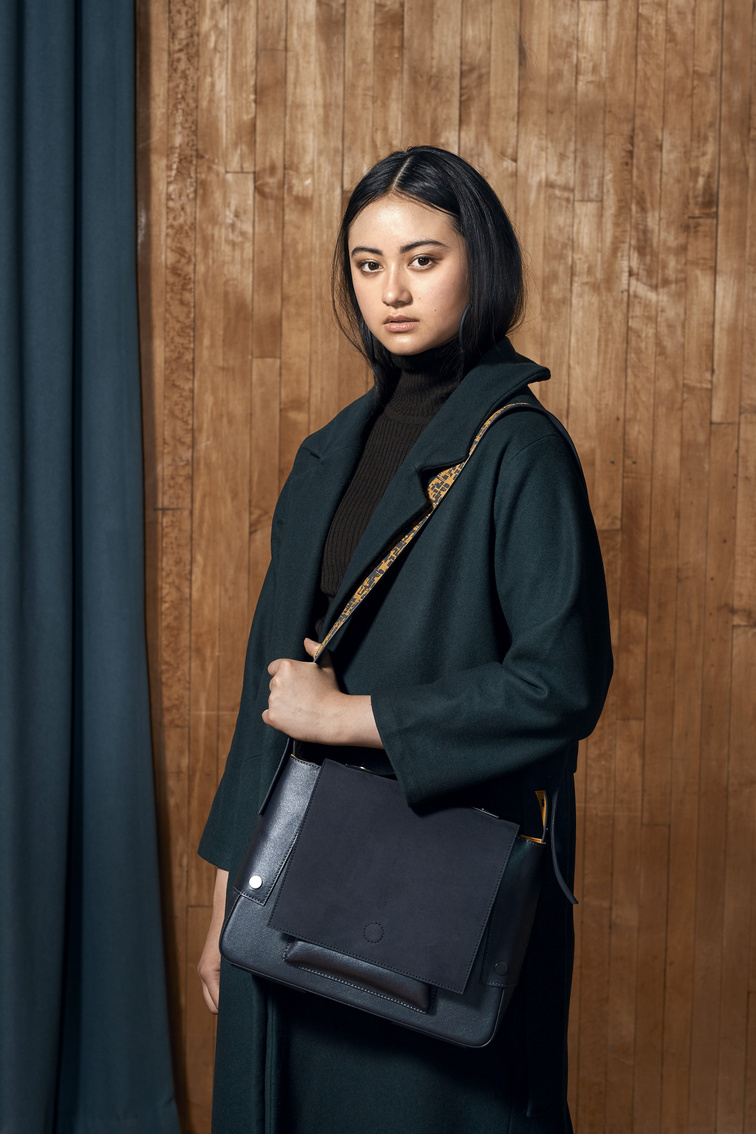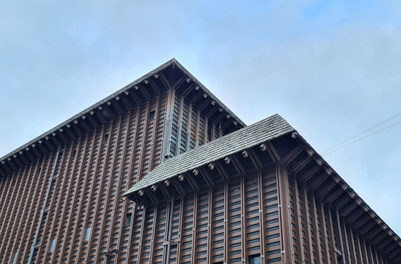KADK viser dansk design med globalt udsyn i London
Med udstillingen ”Løsninger", der åbner på TENT - London Design Festival i denne uge, bringer KADK skolens satsning på FN’s verdensmål ud over landets grænser. 22 nyuddannede kandidater præsenterer innovativt design, der kan bidrage til en mere bæredygtig verden.
Hvordan forvandler man et spildprodukt som fiskeskind til smuk og bæredygtig møbelpolstring? Hvordan skaber man æstetisk design, der let kan adskilles og genanvendes? Og hvordan kan mode få os til at overveje ligestilling mellem mænd og kvinder og løsne mønstre nedarvet gennem generationer?
Unge danske designere tage de store globale udfordringer op på ”Løsninger” - dette års kandidatudstilling fra KADK - Det Kongelige Danske Kunstakademis Skoler for Arkitektur, Design og Konservering. Afgangsudstillingen er den første, siden KADK i sommeren 2016 besluttede at dedikere tre akademiske år til arbejdet med FN’s verdensmål, og nu præsenteres et udvalg af projekterne på TENT – London Design Festival.
Det bæredygtige bidrag får ros af festivalens kurator, Jimmy MacDonald:
"KADK går som uddannelsesinstitution aktivt ind i arbejdet med globale udfordringer og træner studerende i at forstå og se det større billede fra et lille lands perspektiv. I en instagram-verden af design, adskiller projekterne på KADK’s udstilling sig ved at have en mere analog, men også mere gennemtænkt tilgang. Gå ikke glip af den!”
De nyuddannede designere udvider og udvikler dermed den stærke danske designtradition med et bæredygtigt og globalt greb, uden dog af den grund at give køb på dansk designs forankring i brugervenlighed, enkelthed og naturmaterialer, siger fagleder for Designskolen Mathilde Aggebo:
”Dansk design er internationalt berømmet for sit demokratiske designgreb, men nu viser de nye generationer, hvordan det greb kan sættes i spil ikke bare i vestlig velfærdssammenhæng, men med hele kloden som inspirationskilde. Det er en udvikling, jeg er enormt stolt af, og som jeg glæder mig til at følge”.
Udstillingen præsenterer møbler, tekstil, mode, animationer, glas og keramik - i alt 22 projekter af designere udvalgt blandt godt 300 kandidatstuderende. Flere af udstillerne er præmieret for deres arbejde, har udstillet i udlandet og har fået sat deres design i produktion.
VIP-RECEPTION
Pressen er velkommen til at deltage i receptionen for KADK’s udstilling den 21. september kl. 17.00, Stand D03, Hall T1. Udstillingen vil blive introduceret af rektor ved KADK Lene Dammand Lund og Danmarks ambassadør Lars Thuesen.
For yderligere information kontakt: Inge Henningsen, pressekonsulent KADK mobil: 41701533, mail: inge.henningsen@kadk.dk
Pressegalleri: https://kadk.dk/tent-2017
Galleriet viser værker af:
- Damir Krdzovic
- Helene Christina Pedersen
- Ragna Bjarnasdóttir
- Aino Michelsen
- Stina Resting
- Morten Husum
Læs mere om TENT her: http://www.londondesignfair.co.uk/galleries/kadk-0
Læs mere om KADK’s satsning på FN-målene her: https://kadk.dk/fns-verdensmaal-2017
EXAMPLES OF DESIGN WORKS AT THE EXHIBITION
Balkan folk tradition meets Danish Modern
Damir Krdzovic: KNOB
Of Serbian origin, furniture designer Damir Krdzovic is occupied by folk traditions in Serbia and Denmark as well as the different ways people perceive aesthetics.
In the project, he aims to bridge opposites.
He has created a bench and a table, suitable for a community house as well as the most posh setting, thus following the Danish democratic tradition of designing furniture for everyone. The bench and table are made of beech, a material that has been frequently used in the past in the Balkans and Denmark. Each part of the furniture is assembled by pieces of fine leather strings, and is based on a so-called ’raw material shrinkage’ which makes it easy to disassemble and put together again. The result is reminiscent of the works by the famous designer Børge Mogensen, but now with a strong twist of Serbian folklore.
Salmon skin as furniture textile
Helene Christina Pedersen: From waste product to furniture textile
Not so long ago, fish skin was an often used material for shoes and various types of clothing. Today it is mainly considered a waste product that ends up as cheap animal feed.
Furniture designer Helene Christina Pedersen has chosen to regard the humble material as a valuable resource that can be applied in a new and exciting way in the furniture industry – which is an advantage both in an aesthetic and environmental sense.
She has chosen to work with salmon skin. After a careful tanning process, this material can be merged, sewn or used as whole skins. It serves perfectly as a fabric for furniture. The fish skin has a particular shining look, and stands out in colour variations and texture, not seen in traditionally used leather types such as cow skin.
Fashion project to deconstruct mother-daughter gender patterns
Ragna Bjarnasdóttir: Hysteria
In a series of fairytale-like pieces of highly expressive garments, fashion designer Ragna Bjarnasdóttir has explored the concept of hysteria: an outdated medical diagnosis of female sicknesses, both physical and psychological, in which being female was seen as an illness in itself.
She has worked with the emotional tension of being female, of not being listened to or taken seriously, of not being heard or seen as equal.
The collection itself reflects on the moment a young girl tries on her mother’s clothes and thus finds herself embodied in modern femininity. But it is too much for her, the clothes are heavy and too big and she is overwhelmed with the social pressures of being female. She is drowning in femininity.
https://kadk.dk/project/hysteria
Nordic cottage chair from local fish net and wool
Aino Michelsen : Keep Me Warm
The inspiration for this project came from the unrelenting, windy Nordic islands and their tiny houses and summer cottages. Furniture designer Aino Michelsen has designed a chair that would bring warmth and comfort to both outdoor and indoor spaces. It is made from traditional fishing net within a wooden frame and on top of it is a roughly knitted woolen blanket based on Nordic knitting traditions. Functionally and aesthetically, it is designed to fit into the landscape and to enhance the natural atmosphere of quietness and simplicity. The chair is manufactured locally and with locally produced materials.
Magical and material sustainability
Stina Resting: It’s Wrap
Through a complex, surprising and nearly surrealistic aesthetic fashion, designer Stina Resting seeks to intrigue the perceiver or wearer again and again through her design. In this way, her aim is that the designs might linger with the wearer for a long time, making her take care of them and connect with them in an intimate, lasting way. As an aesthetic sustainability.
Stina Resting also focuses on the sustainability of the materials she uses, and she works with upcycling garments and materials and brings them to a new clothing context. In this way, she points out the vast potential of already existing garments to be included in new design contexts in local production.
Stina Resting has recently been awarded the Danish Craftsmen and Designers' Grant for the project.
https://kadk.dk/project/its-wrap
Upholstered furniture designed for disassembly
Morten Husum: EVA foam - Tectonic principles for recycling
Recycling upholstered furniture is difficult today because the furniture consists of many different materials, which are composed in ways that cannot be separated. The purpose of the project by furniture designer Morten Husum is to investigate joint principles with EVA foam, which can be combined and separated by a minimum of tools and time. The cohesion principles are based on the traditional processing methods that belong to the materials. The project shows examples of how these tectonic principles of recycling can be composed and used in a range of furniture.







